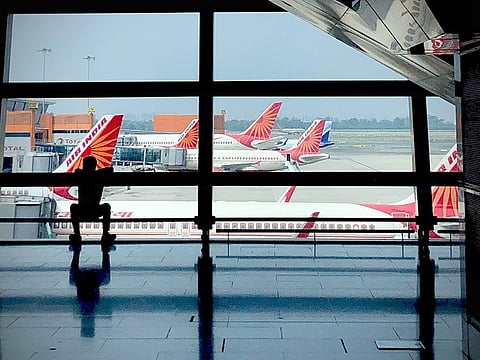Timeline: Air India’s journey to revive its fortunes under Tatas
From piling debt to a fall in reputation, the airline has seen it all

Air India is carving out an ambitious renaissance under the Tata Group conglomerate, which regained control last year after the airline was nationalised nearly seven decades ago.
Earlier this month, the airline placed landmark orders for 470 jetliners from both Airbus and Boeing as it looks to take on domestic rivals such as IndiGo as well as international competitors.
Tata in November announced the merger of Air India with Vistara, a joint venture with Singapore Airlines, to cement Air India as India’s largest international carrier and second largest in the domestic market after IndiGo.
Here is Air India’s timeline, which includes financial troubles, a drop in reputation and Tata’s plans to restore it:
1932: Entrepreneur J.R.D Tata, the first Indian to receive a commercial pilot’s licence, forms the airline, India’s first.
1946: Tata Airlines is converted into a public entity and renamed Air-India. The Maharajah mascot also makes his first appearance.
1953: Air India is nationalised and splits into a domestic airline and an international carrier.
April 2005: Air India launches low-cost carrier Air India Express.
April 2007: National carriers Air India and Indian Airlines are merged into a single airline.
July 2009: The airline appoints State Bank of India to prepare a roadmap for recovery after years of losses under state control and emergence of new players.
April 2012: India approves a $5.8 billion bailout for Air India, which was to be received by 2020.
March 2018: India plans to sell a controlling stake, along with roughly $5.1 billion of the carrier’s debt.
June 2018: India shelves a plan to sell a 76 per cent stake due to lack of interest from bidders
December 2019: India decides to sell 100 per cent of its stake after failing to find takers for its offer of 76 per cent and full debt.
October 2020: The government gets two bids after extending the deadline several times.
September 2021: India’s finance ministry says Air India has received financial bids from Tata Sons and Ajay Singh, promoter of budget airline SpiceJet.
October 2021: India’s government announces Tata Sons as the winning bidder for its 100 per cent stake in Air India, after the conglomerate bid Rs180 billion ($2.18 billion).
January 2022: Tata regains control of Air India.
April 2022: Air India proposes to buy the entire equity share capital of low cost carrier AirAsia India, which Tata has a majority stake in and operates with Malaysia’s AirAsia X Bhd.
May 2022: Tata announces appointment of Campbell Wilson, the head of Singapore Airlines’ budget carrier Scoot, as Air India’s CEO, weeks after appointing N. Chandrasekaran as chairman.
October 2022: Singapore Airlines says it is in talks with Tata about a potential merger of Vistara, their joint venture airline, with Air India
November 2022: AirAsia sells its stake in AirAsia India to Air India.
November 2022: Tata says it is merging Air India with Vistara, its joint venture with Singapore Airlines, with Tata holding 74.9 per cent of the combined entity and the latter owning the rest.
holding 74.9 per cent of the combined entity and the latter owning the rest.
February 2023: Tata places a landmark order for 470 Airbus and Boeing planes.
Sign up for the Daily Briefing
Get the latest news and updates straight to your inbox



